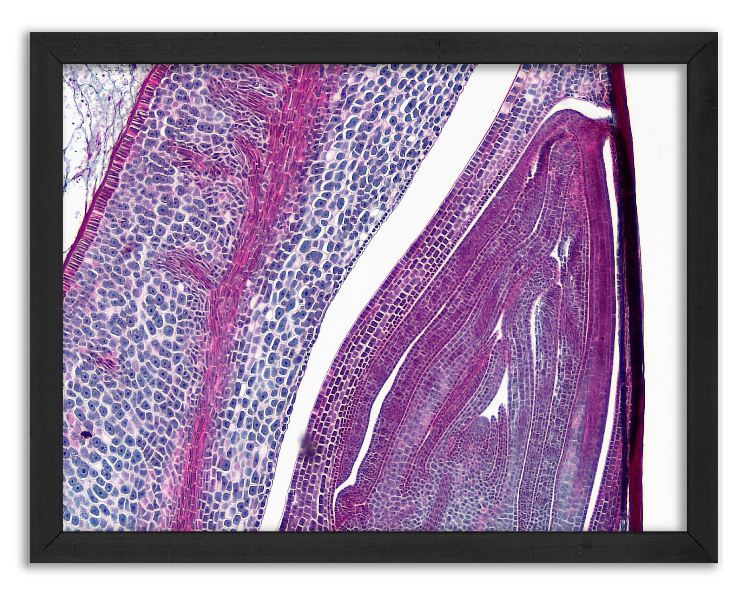
You can download this poster/image in high quality. You can then print it at your local printing shop and hang it on the wall.
The photo shows a cross-section through a corn grain. You can see the tightly packed cells containing the nutrients needed to start growing a new plant. Maize, also called corn, is a cereal grain that was first domesticated by indigenous people in southern Mexico about 10,000 years ago. The plant produces pollen inflorescences, known as tassels, and separate ovuliferous inflorescences called ears, which yield kernels or seeds after fertilization and are considered fruits. Maize is used for various purposes, such as animal feed, corn ethanol, and human consumption. The six primary types of maize are dent corn, flint corn, pod corn, popcorn, flour corn, and sweet corn. The term maize comes from the Spanish form of the Taíno word for the plant, mahiz. Maize is preferred in formal, scientific, and international contexts as a common name because it specifically refers to this one grain, unlike corn, which has a range of meanings that can vary by context and geographic region. The US and a few other English-speaking countries primarily use corn, while most other countries use maize.
You can download this poster/image in high quality. You can then print it at your local printing shop and hang it on the wall.
Subscribe to the newsletter. You will be the first to know about newly added articles or images for free download!

We are passionate about the world seen under the microscope. We want to share our passion with others.